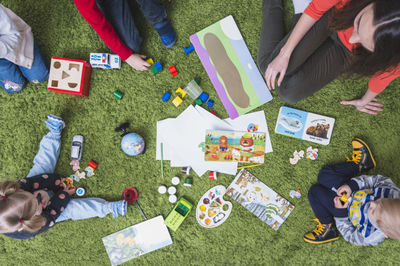The Lowdown On Teaching EFL in a Kindergarten

According to Jeanne Et Al (2009: 284) teachers are regarded as one of the most important socialization factors in every society in the world. A world without teachers would be a black hole without any fruitful improvements. Kindergarten English teachers are regarded as the backbone of any form of language acquisition as people climb the academic ladder. This is the first stage that children are exposed to a language that is completely foreign to them. Children at this stage are just beginning to become comfortable with one language and introducing a new language, especially one as complex as English, can, therefore, be difficult.
Table of Contents
Teaching Resources that Kindergarten teachers can use
Are you ready to teach English to EFL students?
However, studies suggest that children learn languages better than adults, and so children may be able to excel at their EFL studies when they begin in kindergarten. Teachers, therefore, have a huge impact on children's learning by providing and encouraging a supportive environment.
This post was written by our TEFL certification graduate Lorraine K. Please note that this blog post might not necessarily represent the beliefs or opinions of ITTT.
Teaching Resources that Kindergarten teachers can use
- Teaching Guides
- Charts
- Flashcards

Also Read: 5 Important Things to Prepare You for Teaching English in Hanoi
Teaching Guides
Jeremy Harmer in his book (The Practice of English Language Teaching, 1991) states that "the best teachers are those who think carefully about what they are going to do in their classes and who plan how they are going to organize the teaching and learning."
Every lesson is unique and is made up of different stages. Lessons can either focus on grammar, vocabulary, reading or writing. The lesson also may contain listening and speaking activities that concentrate on introducing the new language items or on revision. Thus the actual content of any lesson will depend on what the teacher aims to achieve during the lesson. However, there are some ideas that can be considered for every lesson in order for the lessons to grab the children's interest and attention.
As kindergarten teachers, it is important then to provide students with lessons that are not only well-structured but which are also interesting and enjoyable (using games, music, and manipulatives according to the topic). Careful thought and preparation will help to achieve this. When thinking about an English lesson it is useful to keep the following three elements in mind that is Engage, Study and Active. These three elements, E. S. A. should be present in every teaching sequence, whatever the teacher's teaching point.
Engage
This means getting the students interested in the subject and enjoying what they are doing. If students are genuinely interested and involved in what's going on, the chances are they will learn a lot because they're not just doing what they have to do because they're in school but are actively involved. (Jeremy Harmer 1999).

Also Read: The Benefits of Teacher Career Development
Study
In any lesson students usually need something to study. The Study element of a lesson could be the focus on any aspect of the language, such as grammar or vocabulary and pronunciation. Study stage does not have to be new language input it could also cover revision and extension of previously taught material.
Activate
Simply telling students about the language is not usually enough to help them to learn it. In order for students to be able to develop their use of English, they need to be given the chance to produce it. In an Activate stage the students are given tasks, normally writing and or speaking activities which require students to use language that they have learned.
That is where teaching guides come into play. However, these plans should be used flexibly, and EFL teachers are encouraged to alter elements according to individuals' or whole class understanding.
- Starter – these are teacher-led openers used to gain the children's attention and to introduce the lesson focus/topic.
- Whole class engagement – these are teacher-led activities involving the whole class working together.
- Group/paired/individual work – children work together and can be altered according to the pupil's ability, this provides an opportunity for the EFL teacher to assess the children's understanding.
- Review – a review of the lesson provides a chance to assess whole class understanding.

Also Read: What is the difference between TESOL and TEFL?
Listen to this blog post
Are you ready to teach English to EFL students?
Apply now & get certified to teach english abroad!
Speak with an ITTT advisor today to put together your personal plan for teaching English abroad.
Send us an email or call us toll-free at 1-800-490-0531 to speak with an ITTT advisor today.
Related Articles:
- The 10 Best Destinations for Teaching English Abroad in 2018
- 6 Tips You Need to Know About Jobs Teaching English Abroad
- 8 Reasons to Teach English in Thailand
- The 8 Best Countries in Asia for Teaching English Abroad
- Step-By-Step Guide to Legally Teaching English in South Korea
- The How-To Guide for Americans to Teach English in Europe



